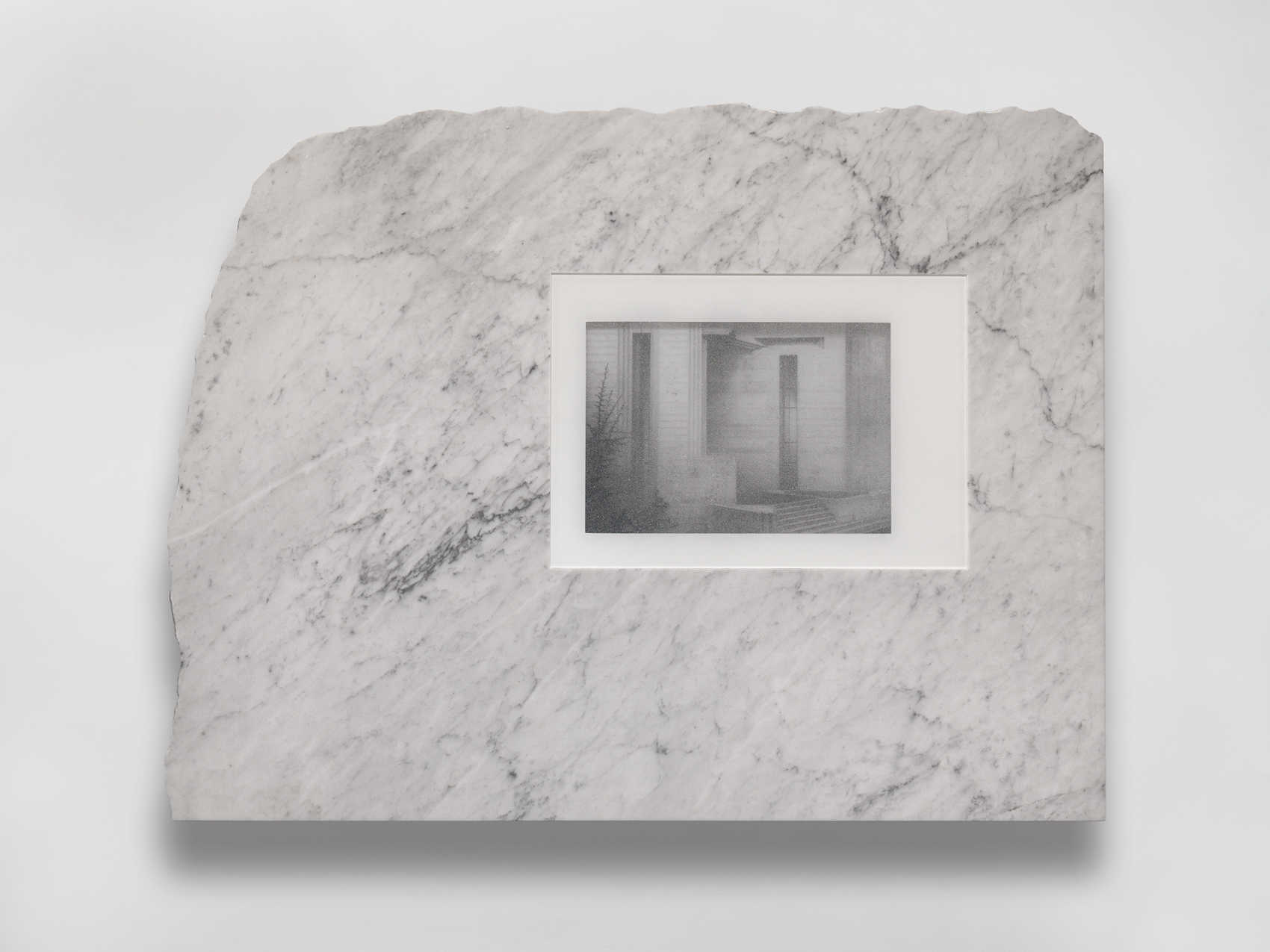Sculptor Alex Hartley’s exhibition at the Victoria Miro Gallery in Venice investigates Carlo Scarpa’s legacy in and around the city.
In encountering Alex Hartley’s work we could run the unsettling words of Nabokov over in our mind, ‘The future is but the obsolete in reverse’. Hartley, whose exhibition Closer Than Before is showing at the Victoria Miro Gallery in Venice running alongside the Architectural Biennale, is their first sculptor in residence. A sculptor, photographer, builder and installationist his work has a long-term engagement with questioning the canons of modernism responding with a destabilising of the nature/culture divide. His works disturbs the conventions of architectural representation taking the iconic building such as Charles and Ray Eames Californian house rebuilt as an eight metre slither, or an early favourite of mine, Case Study, a section of 1:1 scale architecture with an etched glass façade obscuring an interior with a desert view beyond, based on Arts and Architecture magazine’s experiments in American residential architecture during the 50s and 60s.
Alex Hartley This isn’t the Time, 2023. Silver gelatin fibre photographic print on Dibond, pencil and graphite on cartridge paper. 101.4 x 146.5 cm.
Hartley, the first non-painter to take up the residency, was invited to engage with “an embodied relationship to the city”, hence his investigation of Carlo Scarpa’s legacy in and around Venice, “the singular modern architect who has managed to make an imprint on the city” states Hartley. Scarpa, himself born in Venice, completed the Olivetti Showroom just off St Mark’s Square, the restoration of the Fondazione Querini Stampalia, the Venezuela Pavilion in the Gardini and arguably his most celebrated building Briona-Vega Tomb, San Vito d’Antivole, near Treviso.
Hartley, who admits he wasn’t particularly familiar with Scarpa, describes his difficulty as a sculptor in understanding Scarpa’s buildings when viewed initially through photographs. Unlike the Richard Neutra buildings so intuitively photographed by Julius Shulman, which Hartley has photographed intensively overlayed with rampant ecologies, it wasn’t until he began his investigation through visits and drawings that he began to understand the “mathematical geometries” of Scarpa and the interplay of layers, details, and reliefs.
On entering the gallery a series of tidelines threaten and gnaw at the pristine shadow gaps and stain the whiteness of the normally white cubed space. The title, Closer Than Before is intended to trigger a sense of menace for the visitor. “I wanted to hint at an underlying threat, so that you question what has happened in the space” – responds Hartley when I bring up the title. Against this hint of a past and potentially impending climatic threat, we view fragments of Scarpa-esque walls, whose emblems are resonant of the Brion-Vega cemetery, as if the flood has encroached on the Palazzo walls and revealed the archaeology of a Scarpa building-but within the framing time has been disrupted, the 18th century palazzo couldn’t be built on the ruins of a Scarpa building, triggers of Aldo Rossi’s fragments seem to play out, where memory and form interfere with the synchronicity of time.
Hartley describes his intentions as trying to avoid the theatrical and instead create what could be a real-life scenario, as well as acknowledging Scarpa’s relationship to Venice, built on renewal and decay as well as an obsessive control, containment and framing of water. Scarpa’s commission to remodel the palazzo Querini Stampalia Foundation, for public use, welcomed the ‘aqua alta’ into the ground floor so that it submerges then reveals, according to the tides, the Istrian marble steps providing an echo to Closer Than Before.


Seen and Unseen, 2023 (left) and A Frequent Returning, 2023 (right) by Alex Hartley. Carrara marble, black painted plexiglass, C-type photograph, aluminium.
Lifting the eye, we are met by wall-mounted roughly-chiselled slabs of Carrera marble with routered flats containing images of fragments of Scarpa’s building. The marks of the stone chisel convey the material’s raw source. The dialogue between the wall pieces and installation draw out two very different containments of time, one of which is the expression of geological time of which the Carrera marble is a compression of all that of the quaternary period. I am reminded of Amin Taha’s 15 Clerkenwell Close in which the external skeletal frame is constructed of raw quarried limestone delivered directly from the quarry, avoiding wastage, and a reference to the thirteenth century nunnery on the site. The second is a reminder of the ecological imbalances due to climate change, which will in turn leave anthropological traces crushed and compressed into a new layer of the earth’s strata – micro plastics are firmly constituting a new level of geological strata provoking a urgency to redress our current relationship to our built environment and the stuff we leave behind. Hartley describes the Carrera marble pieces as “holding the notion of time within a suspended moment”.
Here Hartley is understated in his approach. His aim is to unsettle. We have perpetually been drawn to ruins – Joseph Gandy’s portrait of the Bank of England commissioned by John Soane is an ambiguous image of the building both seemingly in ruins and under construction. Ruins appear to encompass shifting time frames, a suggestion of past narratives laid bare, creating new interfaces of conceptual, environmental and geomorphic interventions in Hartley’s case. Scarpa, himself buried in the Brion-Vega Tomb, created the monument which, due to its function to bury and celebrate death, assumes the form resonant of a portal – and a beautiful one at that.
Alex Hartley: Closer Than Before is showing at Victoria Miro Venice, Il Capricorno, San Marco, Venice until 17 June 2023.

















